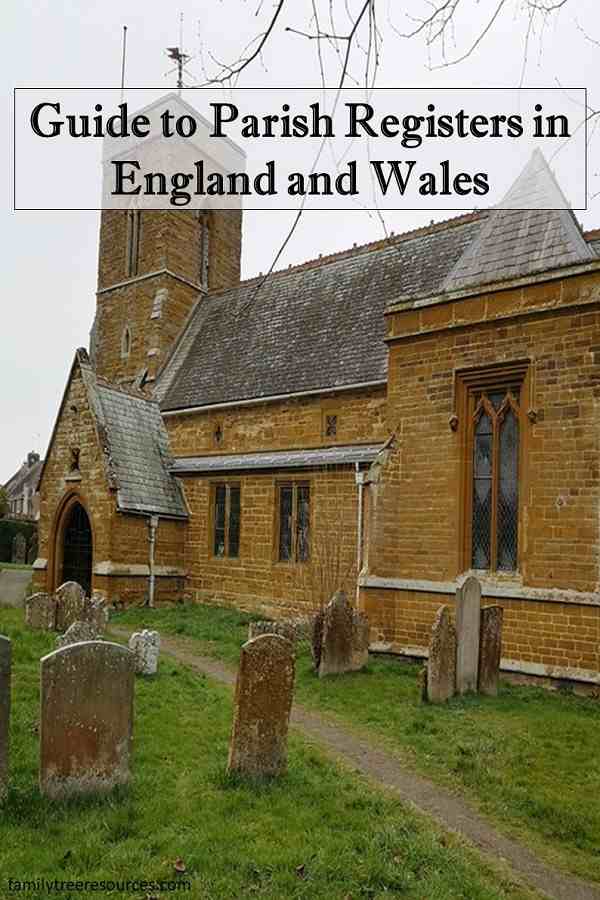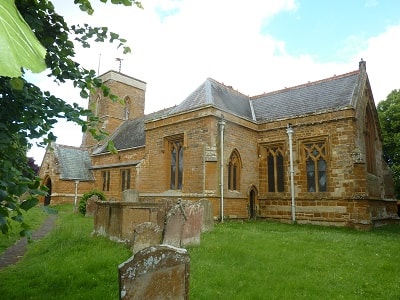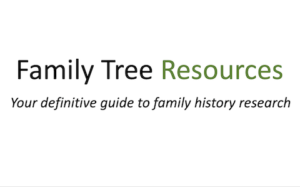
Parish Registers became mandatory on 5 September 1538 when Thomas Cromwell, Vicar General to Henry VIII, ordered clergy to keep records of baptisms, marriages, and burials.
Henry VIII wanted to take the step of splitting with the Roman Catholic church because he wished to annul his marriage to Catherine of Aragon so he could marry Anne Boleyn.
Even though he did not realise it, and it would have been far from his mind, Henry VIII has helped every genealogist ever since because a resource was created that has assisted many people researching their family history in England and Wales.
The decision to create parish registers was not popular at the time, however, because the population felt it was just another way of taxing them and observing them.
King Edward VI, Henry VIII’s son, again stated that these records should be kept because many ministers had not implemented the legislation as they felt it created more work for them.
Unfortunately, however, many parish registers do not survive from the initial period because events were recorded on loose sheets of paper that have been lost over the years.
In 1598, it was ordered that all entries should be made on parchment rather than paper, and that all previous entries should be transferred to the new parchment.
Church registers can be used to discover more about your ancestors before Civil Registration was introduced in 1837 as they contain details of baptisms, marriages and burials for the area.
Birth and death dates were not considered important at this time, however, and the name of the mother was considered to be of no significance.
In the early days of registers, there were many inconsistencies in the way baptisms, marriages and burials were recorded, it being left to the discretion of the vicar as to what information was included.
You may find that baptisms, marriages and burials are not recorded in separate books in earlier registers the way they are today. Records were entered into the register in chronological order, going from a burial to a baptism and then to a marriage and then back to a baptism.
Parish Records During English Civil War
You will find, when looking at parish registers created during the English Civil War (1642-1649), that entries were not made during this time because making entries into parish registers was not considered important. Bishops Transcripts, parish register entries sent to the bishop, were also not required during this period.
Parish Records During the Commonwealth
During the period of the Commonwealth between 1649 and 1660, when the monarchy was restored, a person wishing to register an event had to pay a fee of one shilling, this meaning that many events were left unrecorded because families either did not want to pay, or could not afford, this fee.
In 1653, recordings of births, marriages and deaths were entered into secular ‘parish registers’ and considered to be a civil matter.
All marriages were performed by Justices of the Peace, who presided over the local courts. All civil marriages occurring from 1642 to 1660 were legitimised by the church so that the children from the marriage were not deemed to be illegitimate.
Parish Registers Affected By Great Fire of London
Many parish registers for areas of London were destroyed in the Great Fire of 1666.
Latin Words in Parish Registers
Many registers were written in Latin until 1733, so it is prudent to learn some Latin, especially if you wish to trace your family tree before this date.
The chance of finding that you have to learn some Latin is even higher if your ancestors were Catholic. Some Latin words you may come across whilst conducting research are:
Latin in Baptism Records
| Latin in Baptism Records | |
|---|---|
| Anno | Year of |
| Cum | With |
| Die | Day of |
| Ecclesia | Church |
| Filia | Daughter |
| Fillius | Son |
| Habitantibus in | Those living in |
| Mater | Mother |
| Matrina | Godmother |
| Mensis | Month of |
| Nata est | She was born |
| Natus | He was born |
| Olim | Formerly |
| Pater | Father |
| Patrinus | Godfather |
Latin in Burial Records
| Latin in Burial Records | |
|---|---|
| Sepultus | Buried |
| Uxor | Wife |
| Vidua | Widow |
Latin in Marriage Records
| Latin in Marriage Records | |
|---|---|
| Anno Domino | Year of our Lord |
| Cognomina | Surnames |
| Contraxit | Together |
| Cum | With |
| Die Mensis | Day of the month |
| Ecclesia | Church |
| Eorum residentia | Their residency |
| Impedimentum | Obstacle to the marriage |
| Matrimonium | Marriage |
| Nomina parentum | Names of the parents |
| Nomina sponsorum | Names of the parties |
| Presentibus | Present |
| Testes adfuerunt | Witnesses present |
| Testibus | Witnesses |
Months of the Year in Latin in Parish Registers
| Months of the Year in Latin in Parish Registers | |
|---|---|
| Ianuarii | January |
| Februarius | February |
| Martius | March |
| Aprilis | April |
| Maius | May |
| Iunius | June |
| Iulii | July |
| Augustus | August |
| September | September |
| Octobris | October |
| November | November |
| December | December |
You can also see how Latin was written in parish records.
Rules Clergy Followed When Adding Entries to Parish Registers

Baptisms and burials had to be written into registers within seven days of the event. Marriages had to be written into the appropriate book and signed at the time of the marriage. Marriage Records changed in 1754, when Hardwicke’s Marriage Act came into force.
A marriage register has remained substantially unaltered since 1837, when it was amended in order to correspond with marriage certificates after the implementation of civil registration. This format of recording a baptism, marriage or burial is still in use today.
Dade and Barrington Registers
William Dade, a Yorkshire clergyman in the 18th century, felt it was best to include as much information as possible when entering events into parish registers. These registers are now known as Dade’s Registers. Baptismal registers contained the following information:
- Child’s Name
- Seniority of the Child: whether first born etc
- Father’s Name
- Profession of the Father
- Place of Abode
- Names, professions and abodes of father’s parents
- Mother’s Name
- Mother’s Profession if she had one
- Names, professions and abodes of mother’s parents
- Child’s date of birth and baptism
Although this method of record-keeping was great for genealogists who would be looking at these records years later, clergymen of the time resented the extra work involved in recording all this information, especially if they were in a densely populated area, so this method of recording did not last long.
From 1783, the Lord Bishop of Salisbury, Rt Rev. Shute Barrington, followed a similar system, and when he was translated to the diocese of Durham in 1798, used this system in Northumberland and Durham.
How George Rose’s Act Affected Parish Registers
When George Rose’s Act came into force in 1813, separate registers were required for the registration of baptisms, marriages and burials. Eight entries were recorded in each page of baptism and burial registers from this date.
The Act stipulated that baptism registers should state the baptism date, the name of the child being baptised, and the names of the parents. The father’s occupation and place of residence was also noted.
If the child being baptised was illegitimate, only the mother’s name was noted, although the reputed father’s name was also sometimes mentioned.
The child’s date of birth was also mentioned in some registers.
Finding your ancestors in Parish Registers
If your ancestors did not move away from their place of origin, you may be able to trace several generations of one family just by using a Church register and this can help family history research.
In Church of England parish registers for an urban area, such as Bethnal Green, you may find several baptisms, marriages and burials all took place on the same day. This was vastly different in a rural area where the population was smaller.
Change from Julian Calendar to Gregorian
In 1752, most, but not all, churches began to use the Gregorian calendar rather than the Julian calendar, which was widely used in the Roman world. In the Julian calendar, the year began on 25th March rather than 1st January. April to December 1740 would come before January to March.
If you are looking for an entry in a register prior to this date you must remember that if, say, the date 21st March 1740 is written in a parish register, it would now be entered as 21st March 1741.
This date is usually written in the format 21st March 1740/41 when you record the information from the register to signify this change.
Impact of the Stamp Duties Act 1783 on Parish Registers
During 1783 and 1794, people had to pay a fee of three pence to register each baptism, marriage and burial. This deterred people from registering these events, so you may find that during this period, many such events were not registered.
Many children were baptised after this tax was stopped in 1794, so if you feel your ancestor should have been baptised during this period, it is worth checking they were not baptised after 1794.
Further Information Regarding Parish Registers
To discover more about the recording of a baptism, marriage or burial in the registers, please view my guides on what information can be found in baptism records, marriage records and burial records.
You could also discover a lot of information is contained on memorial inscriptions. Memorial Inscriptions are engravings on gravestones, plaques, cenotaphs or other commemorative items.
Memorial inscriptions serve as a memorial to the dead, often being written by the deceased’s family to honour the memory of the deceased, and where they survive, they can sometimes include more information than that written in the burial register, such as your ancestor’s age.
You may also find that other family members are mentioned on the tombstone, and this can help you to discover if you have found the correct person.
What is Boyd’s Marriage Index?
Boyd’s Marriage Index, compiled under the direction of Percival Boyd, may include marriages from the county of interest to you. It covers the period 1538 to 1837, and is compiled from marriage registers, Bishops’ transcripts and marriage licences.
Whilst not all parishes have been indexed, it is of special use to family historians researching ancestry in Yorkshire, Cambridgeshire, or East Anglia.
The Index can be searched at the Society of Genealogists in London, but has been put on to microfiche so it can also be viewed in record offices and libraries.
What is Pallot’s Marriage Index?
Compiled in the 19th century, Pallot’s Marriage Index incorporates entries from 1780 to 1837. This index, containing more than one million entries, has been compiled from parish registers and enhanced by entries included in Phillimore’s Marriage Register series.
For payment of a fee, the original index can be searched at The Institute of Heraldic and Genealogical Studies (IHGS), 79-82 Northgate, Canterbury, CT1 1BA. It has also been filmed by Ancestry.
Ancestry
Ancestry is great for anyone who does not have the time to, or is unable to, visit Record Offices or Libraries.
It is especially good if you wish to access records from the comfort of your home.
Read my in-depth review to find out more about its features, advantages, and disadvantages.
The index covers nearly all of the 103 parishes situated in the old City of London and Middlesex. The index also includes over 2500 parishes in 38 counties from outside London.
The original index entries were compiled from 1813, the names of the bride and groom, the marriage date, and the name of the church where the marriage took place all being recorded. The marital status of the bride and groom were also often recorded.
Phillimore Marriage Registers
William Phillimore Watts Stiff, known as W. P. Phillimore, transcribed marriage registers until his death in 1914, by which time he had transcribed 1200 registers from several different counties.
Phillimore’s Marriage Registers were published in the late 19th and early 20th centuries. Marriages from various parishes in each county are indexed, but as some registers have not survived, there are some gaps in this index.
Coverage in some counties is very good, but only a few parish registers have been transcribed for some other counties.
The index also includes the residences of the bride and groom where stated in the original record, and whether or not they were married by licence. Phillimore Marriage Registers can be searched at FindmyPast.
FindmyPast
FindmyPast is good for anyone, whether they are just starting their family history journey, or have already conducted some research.
It is especially good for people who wish to read newspaper articles.
Read my in-depth review to find out more about its features, advantages and disadvantages.
Where to find Parish Records
An older church register is normally held by the local Record Office, but more recent books are more often than not still held by the church as they could still be in use today. It should therefore be stressed that Record Offices often do not possess recent records of baptisms, marriages and burials.
In 1978, the Church of England’s Synod stated that if a church was still using registers containing baptisms, marriages and burials over 100 years old, that they should deposit those records with the local Record Office and begin using new registers.
If the church was small, however, they were allowed to continue using the older registers because replacing them was expensive.
If you would like to access more recent records, you are advised to contact the Church holding the registers you would like to see.
Please bear in mind that the Church will probably make a charge to people who wish to take advantage of this service.
You can also check free parish records online at DustyDocs, which shows links to websites who have records and indexes of British baptisms, marriages and burials 1538-1900. Please note that the records are not yet complete, but it is still a great resource, with many records being added all the time.
If you have ancestors in Cheshire, a great project called the Cheshire Parish Register Project is available, whereby it is intended to make all the information included in the parish registers and bishop’s transcripts of Cheshire available online.
The dates covered by this resource are from the earliest entry in each register until 1871. Please note this index is not yet complete, as registers are transcribed by volunteers, but it is still a great resource to use if you have ancestors in Cheshire.
Further information regarding online parish registers can be found by reading my article: are parish registers available online?
Have not found the parish register entry you are looking for?
If you are unable to find an entry you are looking for in a parish register, especially in the earlier years, it is possible that the event was simply not recorded, or is in a different place in the register.
Sometimes events were recorded in different places, so it is prudent to check in other places in a register just in case.
If your ancestor lived in a village, it is also worth checking parish registers of villages in the surrounding area. Tracing an ancestor in London can be very difficult because there are many churches within a very small radius.
It is also possible that the entire family could have moved away from the area because they migrated to another part of the country for work purposes.
Many marriages took place in the bride’s home parish, which may not necessarily have been the parish she was baptised in.
Bishop’s Transcripts Help Bridge Gaps in Parish Registers
If you find a gap in a Parish Register, Bishop’s Transcripts may be able to help as they are simultaneous copies of the Register. A law passed in 1598 meant some parishes had to send the Registers to the local bishop.
These only contain the basic details and do not include additional information the clergyman may have included in the original register. It is also possible however that the clergyman might have used the opportunity to insert an event omitted from the original record, so it is still best to check these as well.
If you cannot find your ancestor in Parish Registers or Bishop’s Transcripts, it is a possibility your ancestors were nonconformists.
There is also a possibility your ancestors were Roman Catholic.
Another reason your ancestor cannot be found in the registers is because they may have been illegitimate. If you still cannot break down your genealogy brick wall, please read my article: 21 Genealogy Research Tips to Help You Find Your Ancestors. I hope that these tips help you to break it down!!
